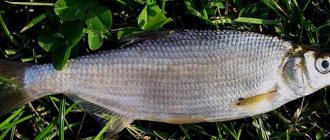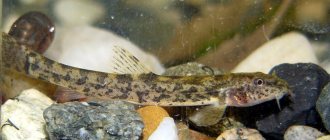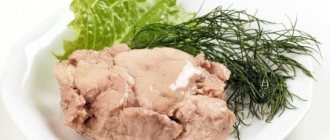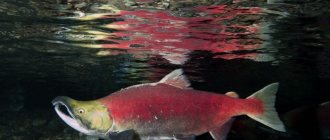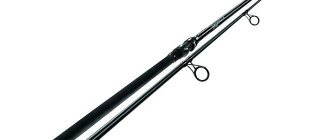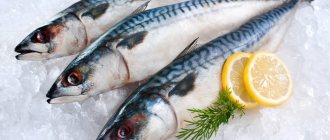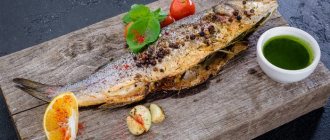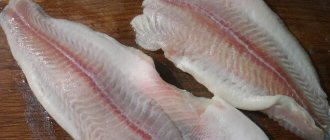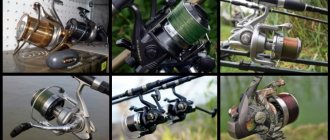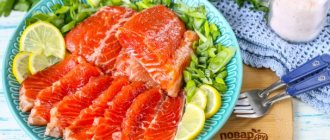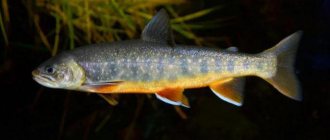General principles of cooking fish
The fisherman (photos and descriptions confirm its unusual appearance) has a long nose protruding above the mouth. It belongs to the family of carp fish, can reach up to 60 cm in length and weigh no more than 3 kg. Syrt (another name for vimba) has good taste - its meat is very juicy and soft. Fish is a dietary product (only 88 kcal per 100 g), since meat contains mainly only protein.
The benefits of vimba are also due to its unique composition:
- Vitamin PP improves brain activity, normalizes the functioning of the nervous system and controls blood cholesterol levels.
- Amino acids (lysine, methionine, tryptophan, taurine) ensure the normal functioning of all vital systems of the body.
- Trace elements and minerals (iodine, chromium, zinc, molybdenum, sulfur, chlorine, fluorine) prevent the development of anemia, control blood sugar levels, strengthen bone tissue, and improve hair growth.
Therefore, fish is recommended for consumption by people with heart and vascular diseases, diabetes, swelling, problems with bone tissue, and rickets. Syrti meat is suitable for preparing various dishes, as it is tasty boiled, fried, stewed, and baked. The most delicious fish is smoked and dried, as well as when baked over a fire. The greatest difficulty with cooking fish is the presence of a large number of bones. To get rid of them, you will have to spend extra time.
Contraindications
Despite its beneficial qualities, fish meat has contraindications. It is not recommended for use by people who have an individual intolerance to this product. In moderation, the meat of this fish can be consumed by pregnant women, people with liver and pancreas diseases, as well as those who are overweight.
Fish does not lose its taste in any form. It is consumed fried, boiled and stewed. The most delicious and healthy fish baked over an open fire. 100 grams of fish meat contains 88 kilocalories. It is for this reason that it is considered dietary.
Recipe in the oven
The fish, the photo and description of which indicate the high fat content of the meat, is baked in the oven without the use of additional sauces - it already has a good taste.
In addition, baking, unlike frying, allows you to preserve the beneficial substances present in the fish as much as possible.
Ingredients
To cook fish in the oven you will need the following products:
- Fish – 1 kg.
- Onion – 1 onion.
- Water – 350 ml.
- Butter – 40 g.
- Vegetable oil – 1 tbsp. l.
- Salt - according to taste preferences.
- Black peppercorns – 5-7 pcs.
- Bay leaf – 1 pc.
Step-by-step cooking process
Cooking fish includes the following steps:
- First you need to prepare the fish - clean it of scales, gut it, trim the fins, and then wash it under running water.
- Prepared fish should be dried using paper napkins.
- Using a knife, make diagonal cuts on the fish (on both sides) at a distance of 2 cm. If the fish is too large, it can be cut into small pieces.
- Next, peel the onion and cut it into half rings.
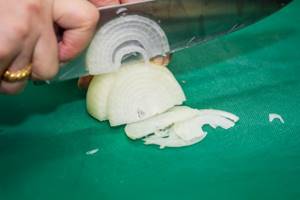
- The baking dish must be greased with sunflower oil, and then half the volume of chopped onions should be placed on its bottom.
- Next, you need to put the fish on the onion, after salting it.
- Pepper, pieces of bay leaf and the remaining onion should be evenly spread on top of the fish.
- Finally, you need to put butter, cut into pieces, on the onion.
- All ingredients should be filled with water (it should cover the fish halfway) and placed in a preheated oven.
- The fish must be baked for 30-40 minutes at a temperature of 180 0C.
Fish can also be cooked in its own juice - then it must be baked in foil or a sleeve. With this cooking option, no water is added. You can diversify the dish by stuffing the fish with vegetables. For this, onions and carrots are suitable, which must first be salted.
It is recommended to serve the fish hot. This can be a separate dish or it can be presented along with a side dish of mashed potatoes.
Fishing Features
Among fishermen, a particularly coveted catch is the fisherman. You have already studied the description, development and habitat of this subspecies of the carp family in our article. It is important to know several features in order for cheese to become part of the catch. The catch is most often carried out in the summer or spring seasons. In this case, you should give preference to the boat. It is impossible to catch such fish from the shore. The best time for fishing is early morning or evening.
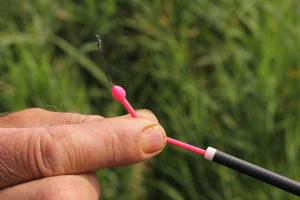
Worms, maggots or fry are used for bait. As a rule, you can catch only a few small fish during the entire fishing period. This is due to the small number of representatives of this subspecies. It is worth noting that damp quite often tears off the nozzle. This can be avoided by purchasing quality hooks. They must have a proven sharpening. The bait must be cast upstream as far as possible. A small hook should be at a distance of 4 centimeters from the bottom.
Dried
The drying procedure is almost identical to drying fish, only in the first case the softness of the meat and a larger amount of nutrients are preserved.
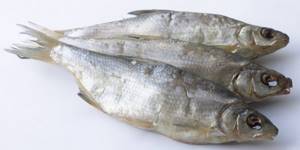
Rybets, photo and description of preparing dried fish.
Drying fish at home includes 3 main stages:
- Salting fish.
- Soaking.
- Drying.
Step-by-step cooking process
Salting is carried out in several ways - dry, wet or mixed. The most common is the mixed method, since it is suitable for salting fish larger than 1 kg, and for smaller fish (they are salted uneviscerated).
The simplest is the dry option, which includes the following steps:
- The fish must be removed from dirt and mucus by wiping (do not wash).
- Next, the carcass should be cut along the ridge, flattened, and then the entrails removed.
- The fish needs to be salted from the inside and also rubbed with salt on the outside. If the fish is small, it is enough to roll it whole in salt.
- Salted fish must be placed in layers in a suitable container. A board corresponding to the size of the neck of the dish (where the fish is placed) should be placed on top and pressed down with a weight.
- Salted fish should be placed in the refrigerator or in a cool place for 3-7 days (depending on the size of the fish).
As a result of this salting method, brine begins to stand out - this is a mixture of fish juice and salt. The fish gradually dehydrates and acquires a rather dense consistency. After the specified time, the fish should be soaked. To do this, you need to drain the juice from the fish, then rinse it under running, cold water. After this, you need to fill the fish with cold water and leave for 1-2 hours. If the fish is large, then the soaking time should be increased to 3-4 hours. After soaking, the fish carcasses should be hung in a cool place.
The duration of fish drying ranges from 7 to 20 days, depending on the size of the carcass and the degree of its fat content. Starting from the 5th day, it is recommended to check the fish for readiness and constantly monitor its condition so as not to dry it out. You should also choose the right place for drying - it should be shaded, with a constant temperature (20-22 0C is considered optimal, but not higher than 35 0C) and well ventilated. In an apartment this could be a balcony, and in a private house it could be a shaded veranda, a basement, or a shady area in the yard.
Fisherman - what kind of fish?! Photo and description
The fish have silvery scales, ranging from dark silver on the back to lighter on the belly. The fins located on the lower part of the body are yellowish in color. During the spawning period, the back darkens, the scales become more shiny, and the belly and pelvic fins acquire a bright orange-red color; at this time, males develop characteristic white tubercles on the head and gill covers.
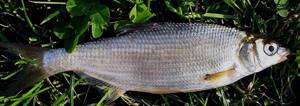
The body shape is elongated, but not too narrow, the dorsal fin is not long, but high. The anal fin is oblong, the scales are large, tightly fitting. The head is elongated with a large nose and a retractable mouth sloping downwards, which indicates the fish feeds on the bottom. A scaleless groove stretches from the head to the dorsal fin; the space from the ventral to the anal fin is also scaleless.
Reaches a maximum length of 60 centimeters and a weight of up to 3 kilograms (except for the Maly Rybets subspecies - up to 19 centimeters and up to 100 grams), usually, when fishing, individuals over 30 centimeters and heavier than 500 grams are rarely caught. Reaches sexual maturity at 4 years and lives up to 17 years.
Spawning occurs in the spring, and can cause long migrations from permanent habitats upstream and deep into rivers. The size of females and males varies slightly. It is a bottom-dwelling species and, accordingly, feeds mainly from the bottom of benthic and benthic types of food - plankton, crustaceans, insect larvae, worms, mollusks, plant foods, etc.
Dried
Drying fish is carried out using the above technology, with the exception of the final stage - drying.
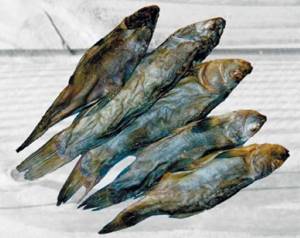
The fish is dried for 4-6 days depending on the size of the carcass.
Ingredients
In addition to the dry salting method described, fish can be salted using the wet method, which involves preparing a special brine.
To prepare it you will need the following ingredients:
- Salt – 1 kg.
- Water – 3 l.
- Bay leaf (ground) – 0.5 tsp.
- Black currant leaves – 3-4 pcs.
- Black pepper (peas) – 15 pcs.
Step-by-step cooking process
The brine is prepared as follows:
- All ingredients must be added to the water and boiled.
- After cooling, the prepared brine should be poured over the pre-cleaned fish.
- Fish in marinade should be placed in a cool place for 2-4 days.
After salting and subsequent soaking, the fish must be sent for drying. Usually it is dried in a suspended state, placed on a twine rope or hooks.
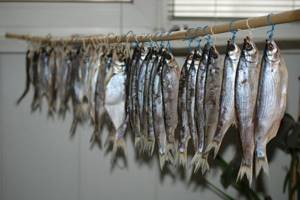
They catch the carcasses through the eye or the lower lip. The place for drying should be sunny, dry and with good air ventilation. In summer, it is recommended to cover the carcasses with gauze to protect against flies.
Description of the fish
It is important to know what a fisherman looks like. First of all, fishermen should know the description of this species. As we said earlier, the color of the cheese changes depending on the time of year. In spring, its belly and some fins have a red tint. During this period, its upper part darkens and becomes black. With the onset of cold weather, the belly of the fish takes on a silvery tint. Its upper part becomes blue-gray and its fins yellowish.
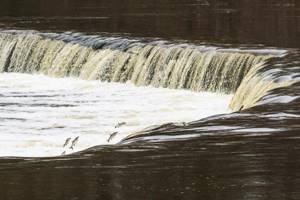
The main signs of such a fish include a slightly open mouth. The fish eats insects, mollusks and plants. Sexual maturity in syrti occurs in the fourth year of life. Fish spawn in May. On average, a fisherman lays 50 thousand eggs. They are quite small in size. In its appearance, vimba caviar resembles poppy seeds. Females deposit it on rocks.
Blackeye bream is a type of fish fish. It has a shorter nose and a narrower body. Its head is black and there is a dark stripe running down its body. The length of such fish does not exceed 30 centimeters. Cheese living in different bodies of water can differ significantly in appearance. It is known that there are also crosses between vimba and other fish.
Salty
Salted fish is served cold as an appetizer. It will help diversify both the festive and everyday table.
Ingredients
Fish brine is prepared using 2 components:
- Salt – 1 kg.
- Water – 3 l.
Step-by-step cooking process
Salting fish occurs as follows:
- Pre-cleaned fish must be placed in a container that does not oxidize.
- Next, you should prepare the brine: the salt must be dissolved in clean drinking water.
- Pour the prepared brine over the fish.
- After this, the dish with fish must be covered with a lid and placed under a press.
- The fish should be left to salt in a cool place for 2-3 days.
To prepare spicy salted fish, add bay leaf, coriander, horseradish leaves, black pepper (corns) and sugar to the brine according to taste preferences. You can give the fish a rich taste by adding red pepper, cinnamon, ginger, nutmeg, mustard, dill, and cumin to the marinade.
To salt fish fish, a mixed method is often used, which involves performing the following steps:
- The fish should be scaled and gutted, and then rinsed with water.
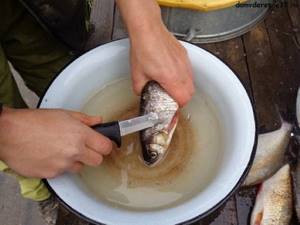
- Next, the fish carcasses must be rolled in coarse salt.
- The next step is to prepare the brine. This can be a classic combination of salt and water or a spicy version with the addition of spices according to taste preferences.
- The fish should be placed in a container suitable for salting.
- Pour the prepared brine over the fish.
As a result, the fish is salted evenly, since the salt on the fish does not dehydrate the formed fish juice - it remains saturated. Also, fat does not oxidize and the weight loss of fish in the finished version is reduced.
lightly salted
Cooking lightly salted fish saves time compared to the traditional process of salting and marinating. As a result, the meat turns out just as tender and soft.
Ingredients
To prepare lightly salted fish you will need the following set of products:
- Fish (large) – 1 pc.
- Coarse salt – 3 tbsp. l.
- Sugar – 1 tbsp. l.
- Vodka – 1 tbsp. l.
- Black pepper (ground) – 1 tsp.
Step-by-step cooking process
Cooking a dish includes several stages:
- The fish should be scaled, gutted, the head cut off and washed well under running water.
- The prepared carcass must be divided into 2 fillet parts.
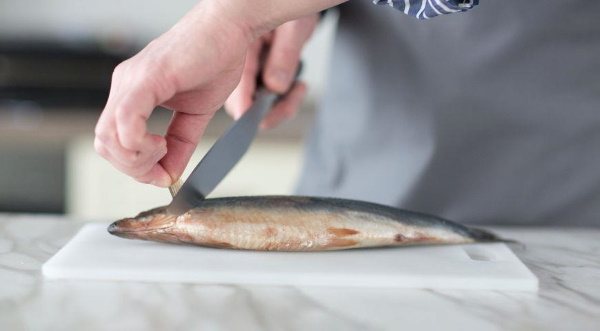
- The dry ingredients included must be mixed with vodka.
- Next, the resulting brine should be poured/spread evenly over the fish fillet on all sides.
- The fillet should be placed in a suitable container (it is necessary to place the flesh against the pulp) and cover with a damp towel.
- After this, the salted fish should be left to infuse in the refrigerator for a day.
Where is it found?
According to textbooks, within Eurasia the fisherman has a fairly wide but limited habitat. Most of it is found in the basins of five seas: the Caspian, Black and Azov in the south, the Baltic and Northern in the north. Vibrant fish dishes are valued in Russia, Ukraine, Poland, Belarus, Germany, Lithuania, Latvia and Estonia, Kazakhstan, Azerbaijan, and Iran. They are equally revered by both the indigenous peoples of the north and the southern Caucasian peoples, who know a lot about fish diversity.
Basically, the range is limited to fresh water bodies, but the fishfish is found in river mouths and estuaries, where the water has low salinity compared to the sea. That is why the fish is called semi-anadromous.
Externally, the subspecies do not differ much, but “salted” fish are usually larger than “fresh” ones.
The traditional statement is that the fishermen are not found in the Volga basin, as well as beyond the Urals. But modern scientists come to the conclusion: there are few representatives in these parts, they rarely get hooked. The second version is that due to some differences in appearance, raw materials here have different names and are sometimes classified as a different family.
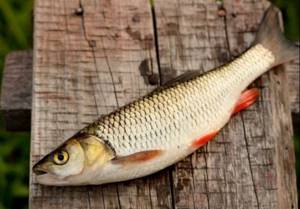
In the Russian Federation and Belarus, the raw material is included in new editions of the regional “Red Books” and is under protection due to the threat of extinction. This is due to industrial fishing and changes in the ecosystem.
Smoked
Rybets (photos and descriptions by chefs indicate that it is especially tasty when smoked) is smoked on fruit wood or alder shavings.
Ingredients
For preparation you will need the following ingredients:
- Fish – 3 kg.
- Salt – 200 g.
- Sugar - 50 g.
- Black pepper – 20 g.
- Red pepper – 20 g.
Step-by-step cooking process
Smoking fish includes the following steps:
- Cleaned fish must be rubbed with a mixture of pepper and salt inside and out.
- After this, the fish should be put in a cold place for 12 hours.
- After the specified time has passed, you need to wash off the excess salt from the fish and hang it to dry for 1-2 hours.
- Place a 3 cm layer of wood on the bottom of the smokehouse, and install a foil-covered grate on top.
- Prepared fish carcasses must be placed on a wire rack and then covered with foil - this will help protect the fish from soot.
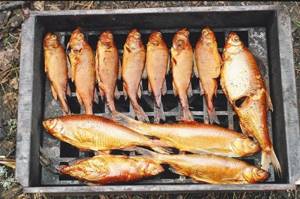
- Next, the fish should be smoked for 40 minutes. This time must be counted from the moment when smoke begins to come out from under the smokehouse lid.
During smoking, it is recommended to maintain medium heat for the first 15 minutes. Next, its intensity should be gradually increased, and in the last 20 minutes of smoking, the fish should be kept at maximum heat (temperature is 120 0C). At the end of the smoking time, the smokehouse must be removed from the heat. Its lid is not opened so that the fish remains in the smoke for an hour.
What to fish with
Catching fish under any of the names is not so easy. During the spawning period, it makes long forced marches upstream of rivers and goes into the depths.
It always feeds from the bottom, preferring crustaceans, larvae, mud, worms, plankton and some mollusks. The diet in shallow and deep waters differs, so the population goes to spawn for more refined food.
Immediately before the time of active reproduction, the raw fish reserves strength and simply gorges itself in the shallow waters that warm after winter. This period of the year is especially favorable for fishing (private or industrial).
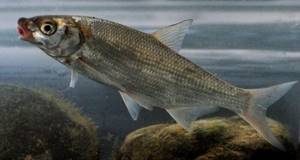
Fishing masters reveal several secrets of a successful trip for raw fish. To do this you need:
- find a point with fresh running water;
- feed future prey from a metal spiked feeder (they are more resistant to currents) with a mixture with the addition of the main bait;
- prepare gear – donks, hooks with floats, “rings” – with a good supply of fishing line length (at least half a meter) in order to put the bait on the bottom, lull vigilance, and prevent you from feeling the tension of the gear ahead of time;
- stock up on animal feed suitable for these places (molluscs, maggots, bloodworms, insects, worms);
- catch early in the morning or at the very beginning of the evening.
For fishing, you can also use vegetarian bait: fresh green peas, corn grains, pearl barley, semolina or dough. But you can count on success only in warm weather, which means in the southern regions. The Caspian species is often caught on a plant hook. The further north you fish (starting from Latvia and Pskov), the more “heavy” the food for bait should be.
Marinated
Fish (photo and recipe description below) is often marinated, as this process gives the meat juiciness and rich taste.
Ingredients
The products needed to prepare the dish are presented in the table:
| Ingredients | Quantity |
| Fish | 2 kg |
| Onion | 4 things. |
| Bite | 200 ml. |
| Salt | 170 g |
| Water | 1.2 l. |
Step-by-step cooking process
Marinating fish includes the following steps:
- The fish must be scaled and gutted, and then washed well.
- Next, the carcass needs to be cut into small pieces. If the fish is small, it should be cut into 2 parts.
- The fish must be placed in a suitable container, salted, mixed thoroughly, after which it should be left to stand for a while.
- The onion must be cut into half rings, pour over the bite and mash it. Onions need to be left for 10 minutes.
- Next, the prepared onion should be added to the fish and mixed.
- The next step is to prepare the marinade: for this you need to mix salt, water and vinegar until the salt is completely dissolved.
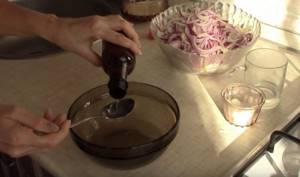
- Pour the finished marinade over the fish (it should cover the fish completely).
- The fish should be left to marinate in the solution for 12 hours.
Fishing methods
Since the raw fish sticks to places with a fairly strong current, its fishing should be carried out with appropriate gear that allows you to correctly present the bait in a strong flow of water. It is better to catch Vimba using modern Bolognese and feeder tackle. Modern tackle will ensure the correct delivery of the bait to the fishing point and will give the angler a lot of positive emotions when landing fish.
Bolognese fishing rod
Bolognese tackle is excellent for catching vimba on small rivers with moderate currents, where casting the tackle 15–20 m is quite enough to reach the fish’s resting places. Bologna fishing tackle for vimba consists of several elements:
- Bolognese rod 6–7 m long, equipped with a spinning reel size 3000;
- main sinking line with a diameter of 0.16–0.18 mm:
- drop-shaped or spherical float with a load capacity of 4–12 g;
- sliding pear-shaped sinker;
- stop silicone bead;
- medium size swivel;
- leash made of monofilament fishing line with a thickness of 0.12–0.16 mm;
- hook.
When fishing in strong currents, it is necessary to use bite alarms with a carrying capacity of more than 10 g, so the test range of the rod used for fishing for raw fish should be 10–25 g, which will allow you to easily cast heavy equipment and have good control over its movements during retrieving. Since wire fishing involves frequent contact of the main line with rocky bottom soil, you should not use monofilaments that are too thin, as they will quickly become unusable. High-quality monofilament fishing line with a diameter of 0.16–0.18 mm is ideal for equipping a Bolognese fishing rod.
A drop-shaped or spherical float is less susceptible to pressure from the directional flow of water and is more stable in conditions of strong current. The antenna of the Bolognese bite alarm must have its own buoyancy, which will allow bottom-based wiring.
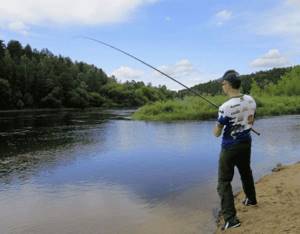
The cheese provides the strongest resistance when fishing, so the tackle must have a certain margin of safety.
A pear-shaped lead sinker can injure the fishing line during fishing, so a silicone cambric must be inserted inside its through hole to protect the monofilament from damage. The silicone bead present in the equipment prevents the connecting knot from being broken by a lead sinker. A high-quality swivel prevents the leash from twisting during wiring.
Particular attention should be paid to the length of the leash, which should be 60–90 cm. Such a long leash gives the bait additional play in the current, thanks to which the bait notices the bait faster. Since we are talking about catching strong and large fish, you should not use leashes thinner than 0.12 mm, since the use of thinner leashes is fraught with frequent breaks and annoying derailments.
The vimba always desperately resists during fishing, so the angler should refrain from using hooks smaller than No. 12. The use of fairly large hooks is also supported by the fact that fishermen are more often caught using relatively large baits. The procedure for assembling equipment for catching vimba is as follows:
- a float is installed on the main monofilament;
- a sliding sinker is put on the fishing line;
- a stop bead is placed on the monofilament;
- a swivel is tied to the end of the main line;
- A leash with a hook is attached to the swivel.
The equipment is adjusted in such a way that the distance from the sinker to the float is 0.5–1 m greater than the actual depth at the fishing site. When retrieving, the sinker drags along the bottom of the river, and the leash and hook follow in front of it. Thanks to the sliding design of the sinker, the fish bite is instantly transmitted to the float.
Useful tips and tricks
Fish fish, based on the descriptions and photos on culinary sites, is not difficult to prepare - the main thing is to follow some recommendations:
- It is better to cook fresh fish immediately after catching.
- If the gall bladder was damaged during cutting of fish, the places where the bile entered should be rubbed with salt.
- Regardless of the cooking method, fish should be salted before cooking.
- 2 minutes before the end of frying, the fish should be removed from the heat - in a hot frying pan it will reach readiness and at the same time retain its juiciness and tenderness.
- If the fish sticks to the bottom of the pan during frying, add salt to the frying oil.
- Adding pieces of potato to the pan will help remove the smell of river fish when frying.
- When frying fish, it is recommended to cook for 15 minutes. put in milk with pepper and salt - this will make the meat more tender and juicy.
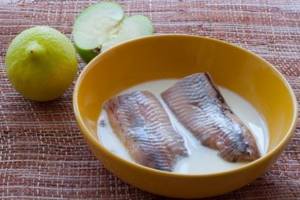
- To create a crispy crust when frying or baking, fish should be dried with paper towels before cooking.
- You should not remove the fish from the skin - the existing layer of fat between it and the meat will make the fillet more tender and juicy, retaining moisture inside. Before serving the fish, the skin can be removed.
- When cooking fish, it is better to place it in cold water with spices.
- Frozen fish can be used if it has been frozen once. If the product has been frozen longer, the final dish will be loose and will disintegrate into fibers.
- But all the efforts in cooking will be in vain if the fish turns out to be stale. The following tips will help you check the quality of chilled fish:
- Smell – river fish should have a slight muddy smell. A strong fishy aroma may indicate that the product is stale, while the smell of ammonia indicates that the product is unusable.
- The scales should be free of cracks and moist.
- A bent and dry tail indicates that the fish is not fresh.
The eyes of fresh fish should be transparent and protruding. The gills of fresh fish are bright red or bright pink. The presence of mucus indicates a stale product. When pressing on the belly of fresh fish, small depressions remain. The fish can be placed on the palm of your hand - if it is fresh, it will lie flat, but in spoiled fish the tail and head will sag.
When the tail and head are bent at the same time, a high-quality carcass will bend well, but a stale one may even break. Fish is a valuable food product due to its beneficial properties. When preparing, it is important to follow the descriptions (photos, step-by-step processes) of the recipes and follow the recommendations provided.
